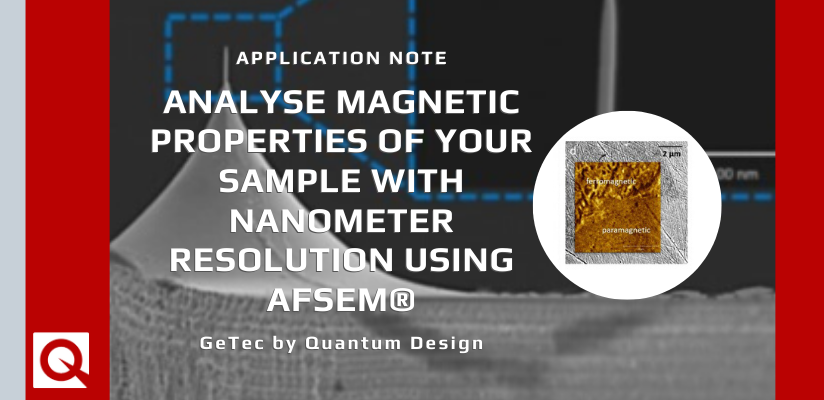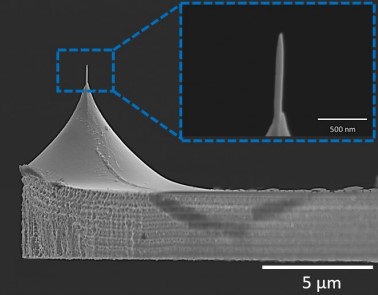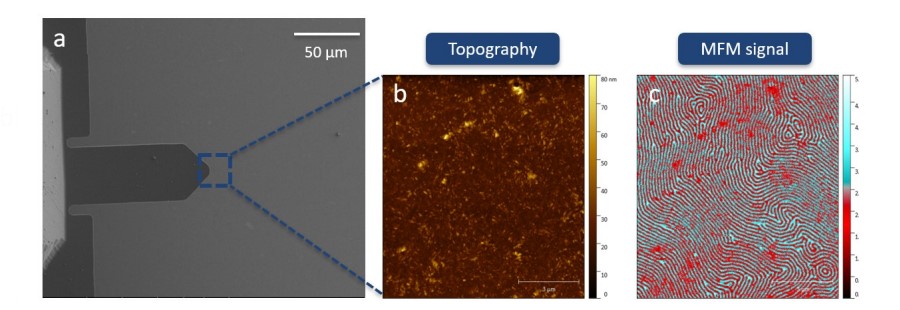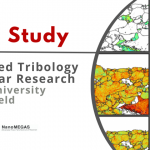
Analyse magnetic properties of your sample with nanometer resolution using AFSEM®
Magnetic compounds and multilayer structures are very promising for potential applications in spintronics, thermo-electrics, nanoelectronics and information technology. Currently, their most common use is for data storage. Magnetic force microscopy (MFM) is not only widely used in the quality control of magnetic data storage but also adopted to probe magnetic samples and differentiate between their magnetic domains. Especially the capability for in situ analysis of magnetic nanostructures inside a SEM opens completely new possibilities for correlative in-situ analysis.
In combination with the GeTec in-situ AFM solution we use a novel 3D nano-printing technology for the fabrication of unique high-aspect ratio magnetic tips for MFM applications. A sharp magnetic tip is printed on a standard silicon tip resulting in a tip radius of approx. 10 nm, therefore allowing high-resolution magnetic imaging.

Measurements done on two different samples are presented here to illustrate the MFM capability of AFSEM®.
The first sample, prepared in collaboration with Helmholtz Zentrum Dresden Rosendorf, consists of several alternating layers of Pt and Co deposited on top of Si/SiO2 substrate, showing a very distinct magnetic signal with high contrast.

The second sample, prepared by researchers at TU Dortmund University, is a duplex steel consisting of paramagnetic and ferromagnetic phases distributed all across the surface. The different phases are visible in the scanning electron microscope and the cantilever is easily positioned at the grain boundary of two distinct phases using the SEM guidance. Therefore, it is crucial to have the combination of SEM guidance and in-situ AFM in order to analyse distinct grain boundaries on the sample. AFM topography of the sample shows a flat surface with scratches due to prior polishing and does not distinguish between paramagnetic and ferromagnetic phases.
On the other hand, MFM signal does not only show a clear boundary between two phases but also displays the sub domains within the ferromagnetic phase with high-resolution. In summary, AFSEM® is the solution of choice to obtain magnetic properties of any magnetic sample inside the high-vacuum environment of SEM or FIB systems. SEM guidance makes the identification of the region of interest and cantilever positioning convenient and user friendly. The unique magnetic “super-tips” on self-sensing cantilevers enable a quantitative correlative 3D analysis in combination with high-resolution MFM imaging of magnetic nanostructures.









